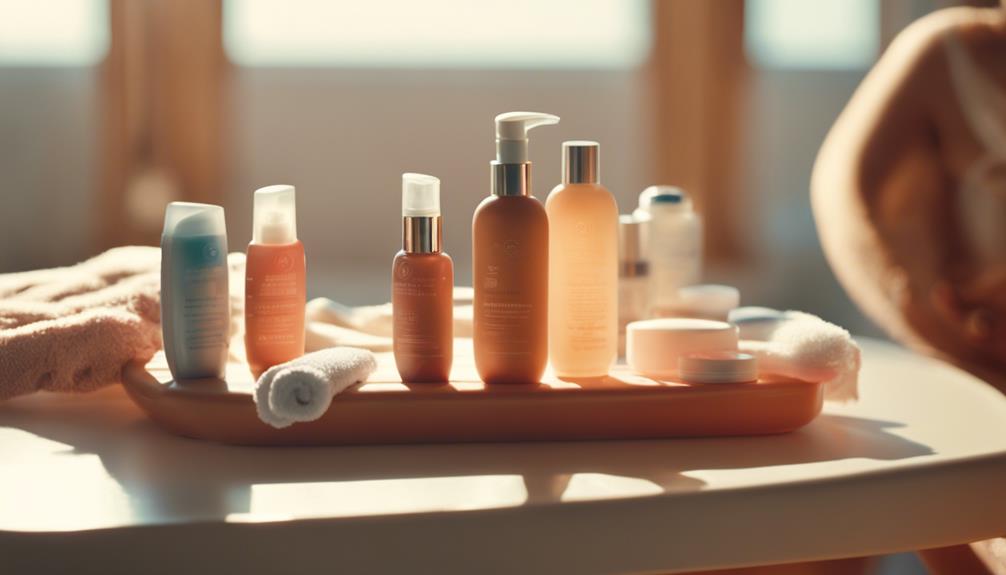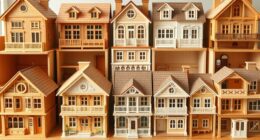To ensure your safety while using tanning beds, it is important to understand your skin type and its limits in order to avoid overexposure. Remember to always wear UV-blocking goggles and opt for snug swimwear to protect sensitive areas. Start with short sessions of 3 to 5 minutes, gradually increasing the time as your skin gets used to the exposure. Use indoor tanning lotions that are specifically designed to boost melanin production and keep your skin hydrated. After your tanning session, make sure to moisturize to restore any lost moisture. Also, be cautious of any medications that may increase your skin’s sensitivity to UV light. To learn more about maximizing your tanning experience, there is additional information available for you to explore.
Key Takeaways
- Know your skin type and set UV exposure limits to prevent burns and ensure a safe tanning experience.
- Always wear UV-blocking goggles to protect your eyes from harmful rays during tanning sessions.
- Start with short sessions of 3 to 5 minutes to gauge your skin's reaction to UV exposure.
- Use indoor tanning lotions to boost melanin production and hydrate your skin, avoiding over-application.
Skin Assessment and Preparation
Before you hit the tanning bed, assess your skin type and sensitivity to determine the best tanning routine for your needs.
Identify whether you have fair, medium, or dark skin, as this will help set your UV exposure limits. If you're prone to sunburn, it's essential to start slow. Consult a tanning expert for personalized advice tailored to your skin.
To prepare, exfoliate and hydrate your skin at least one day before tanning, using a lightweight, non-oil-based moisturizer to enhance absorption.
Also, check any medications for increased UV sensitivity and remove makeup, jewelry, and fragrances.
This preparation guarantees a healthier tanning experience while focusing on achieving your desired glow safely. Your skin health should always come first!
Protective Measures
Protective measures are essential for guaranteeing your safety while tanning in a bed.
First, always wear UV-blocking goggles to shield your eyes from harmful rays; closed eyes alone won't protect you.
Opt for snug swimwear or protective clothing to cover sensitive areas, reducing the risk of burns.
Consider using tanning stickers to track your bronzing progress and guarantee even exposure.
It's vital to position your body correctly so that all areas receive equal UV exposure.
If you're unsure about what to wear, consult a tanning expert for recommendations that fit your skin type.
Lotion Selection and Application

Choosing the right indoor tanning lotion can greatly enhance your tanning experience and help achieve an even, long-lasting glow.
Look for lotions specifically designed for indoor tanning; these contain ingredients that boost melanin production. Hydrating lotions are essential, as they prevent your skin from drying out during sessions.
When applying, use circular motions to guarantee even coverage and avoid over-application, which can lead to streaks. If you want to enhance your tan further, consider bronzing formulas.
After your tanning session, apply a tan extender lotion to maintain your color for as long as possible.
Understanding Exposure Limits
Understanding your individual skin UV tolerance is essential for safely enjoying tanning sessions without risking overexposure.
Begin your tanning journey with short sessions lasting 3 to 5 minutes. This allows you to gauge how your skin reacts to UV exposure.
Pay close attention to any changes in your skin's condition after each session. If you notice redness or irritation, cut back on your tanning time.
Gradually increase your exposure based on your skin's response, but always prioritize safety over achieving a quick tan.
Remember, it's better to build your tan slowly than to deal with the consequences of overexposure.
Medication Interactions

Being aware of how certain medications can increase your skin's sensitivity to UV rays is essential for a safe tanning experience. Before you step into the tanning bed, check if you're taking any photosensitive medications. It's best to consult your healthcare provider about potential risks. Here's a quick reference table to help you identify some common medications that can heighten sensitivity:
| Medication Type | Example Medications |
|---|---|
| Antibiotics | Doxycycline, Tetracycline |
| Antidepressants | Fluoxetine, Sertraline |
| Acne Treatments | Isotretinoin, Benzoyl Peroxide |
Staying informed about these interactions will help you protect your skin and enjoy your tanning session safely. Always prioritize skin health and protection.
Post-Tanning Care
Applying moisturizer immediately after tanning helps replenish moisture and enhances tan retention.
Choose a hydrating lotion that suits your skin type to keep it soft and supple. Aloe vera is a fantastic option, as it soothes the skin while promoting tan longevity.
Avoid using harsh skincare products, as they can strip away your new color and lead to dryness.
Hydrate from within by drinking plenty of water, which supports your skin's overall health.
Stick to a gentle skincare routine to maintain your tan and prevent irritation.
Remember, caring for your skin post-tan is essential for both your immediate comfort and long-term results.
With the right post-tanning care, you'll enjoy a beautiful glow for longer!
Safety Tips for Beginners

To guarantee a safe tanning experience, you should know your personal skin limits to avoid overexposure.
Always wear protective goggles during your tanning sessions to shield your eyes from harmful UV rays.
Start with low-intensity beds and limit your exposure to short sessions, around 3-5 minutes, to assess how your skin reacts. Gradually increase the duration only if your skin tolerates it well.
Approach tanning as a learning process; consistency will yield better results without burns.
Keep a regular tanning schedule and don't forget to moisturize your skin before and after each session.
This way, you can enjoy a beautiful tan while prioritizing your skin's health and safety.
Frequently Asked Questions
How Often Should I Tan for Optimal Results?
To achieve ideal results, you should tan 1-3 times a week, depending on your skin type. Monitor how your skin reacts, and adjust your frequency to avoid overexposure and maintain a healthy glow.
Can I Tan if I Have Tattoos?
Yes, you can tan with tattoos, but be cautious. Protect your tattoos with sunscreen to prevent fading. It's best to wait a few weeks after getting a tattoo before tanning to guarantee proper healing.
What Are the Signs of Overexposure?
Did you know that nearly 90% of skin cancer cases are linked to UV exposure? If you notice redness, peeling, or blistering skin, you're likely overexposed. Pay attention to these signs to protect your skin.
How Do I Clean a Tanning Bed After Use?
After each tanning session, wipe down the tanning bed with disinfectant wipes, focusing on the surface and any controls. Make sure to clean the goggles and follow manufacturer instructions for thorough maintenance.
Are There Any Alternatives to Tanning Beds?
While tanning beds offer convenience, sunless options like self-tanners and spray tans provide safer alternatives. You can achieve a sun-kissed glow without UV exposure, preserving your skin's health while enjoying a beautiful tan.
What Are the Most Important Safety Tips for Beginners Using a Tanning Bed?
When using a tanning bed, it’s crucial to follow tanning bed safety tips to avoid potential risks. Always wear protective eyewear, limit session times, and never overexpose your skin. Use caution and be mindful of your skin’s reaction to prevent burns or other skin damage.
What Are Some Important Safety Tips for Using a Tanning Bed as a Beginner?
Before using a tanning bed, it’s essential tanning bed safety to always wear protective eyewear. Start with short sessions to avoid skin damage and overexposure. Keep your skin moisturized and use a timer to prevent overdoing it. Lastly, consult a dermatologist before starting to tan.
What Are the Key Safety Tips for Using Tanning Beds, Especially for Beginners?
When using tanning beds, especially for beginners, it is essential to prioritize tanning bed safety. Wear eye protection to prevent damage and limit your sessions to avoid burning. Apply a quality indoor tanning lotion and never use outdoor products. Follow these essential tanning bed safety tips for a safer experience.
Conclusion
By following these tanning bed safety tips, you can enjoy a beautiful glow while keeping your skin healthy.
Did you know that just one session in a tanning bed can increase your risk of developing skin cancer by 20%? That's a stark reminder to prioritize safety.
Embrace a gradual tanning routine, protect your skin, and choose the right products to make your tanning journey both enjoyable and safe.
With the right approach, you can shine confidently without compromise!










